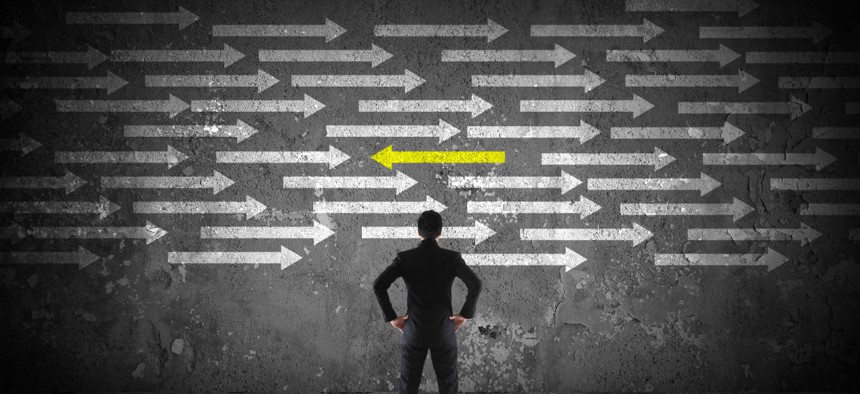The Challenge Effective Leaders Embrace Every Day
Organizations are mostly designed to optimize the status quo. A simple diagram can show you how to break free.
I tripped across a simple diagram depicting a continuous loop of learn, adapt, and influence, in a book on negotiation by Michael Wheeler of Harvard Business School, The Art of Negotiation: How to Improvise Agreement in a Chaotic World. While his emphasis was on describing the continually shifting environment in any negotiation, this endless loop nicely illustrates the climate of every person involved in managing and guiding others.
Learn
The best leaders I’ve encountered are active learners. They listen more than they talk, and their curiosity is on display in every setting.
Great leaders go beyond the what to the why and how, whether the topic is understanding a competitor’s strategy or the dynamics of a struggling project team. One leader I worked for was welcomed at team meetings because her curiosity spurred great questions and allowed us to frame opportunities and problems in different ways, leading to superior solutions. Her approach helped all of us think and perform at a higher level.
Effective leaders are also relentless learners in the classic sense, striving to tune-in to the latest ideas from big thinkers as well as the ideas from past thinkers that changed the world.
And much like the negotiators described in Wheeler’s book, effective leaders are good on the fly, striving to continually update their situational awareness. They read the dynamics in meetings and the challenges and psychology of groups and adjust accordingly.
Learning and leadership are never far apart, yet the value from this learning is created in the next two steps: adapt and influence.
Adapt
Almost universally, where I see individuals stalling out in their careers, I find them inflexible to change. Regardless of the insights gained through learning, the lack of willingness to shift frames and stretch thinking positions these individuals as uncooperative and rigid in settings where the ability to adapt is essential for survival. This stall happens with teams as well, from top management to functional and project teams.
Alternatively, those who can pivot in their thinking and actions tend to do well in environments under stress from outside forces. Instead of operating with a “This is how we do it,” mentality, they lead with, “Given the new information, how should we do this?”
Cultivating your ability to adapt takes courage and discipline. We’re wired to prefer the safe-known instead of the risky-unknown, and embracing the latter means some deliberate cognitive rewiring. Succeed with this rewiring effort, and you move to the third act in this cycle: influence.
Influence
Influence is where the rubber meets the road in the form of results. There is no leader without followers and no value to learning and flexible thinking unless this adds up to motivating others to do something new that creates value for the organization.
Effective leaders are both teachers and guides. These individuals provide context for the changing situation, and they offer a working environment where adaptability flourishes and new and necessary actions are the byproducts. These leaders influence others not through force of title but through the work of teaching and guiding.
This endless cycle of learn, adapt, influence, is vital for individual and organizational success and difficult to realize and sustain. Adding complexity to this challenge is the reality that our organizations are mostly designed to optimize the status quo. Adaptability and the freedom to try new things in new ways is in direct opposition to the gravitational pull of the present. Effective leaders embrace this challenge every day. They do it by engaging in an endless process of learning, adapting, and influencing.
Art Petty is a coach and consultant working with executives and management teams to unlock business and human potential. He writes the Leadership Caffeine blog.



